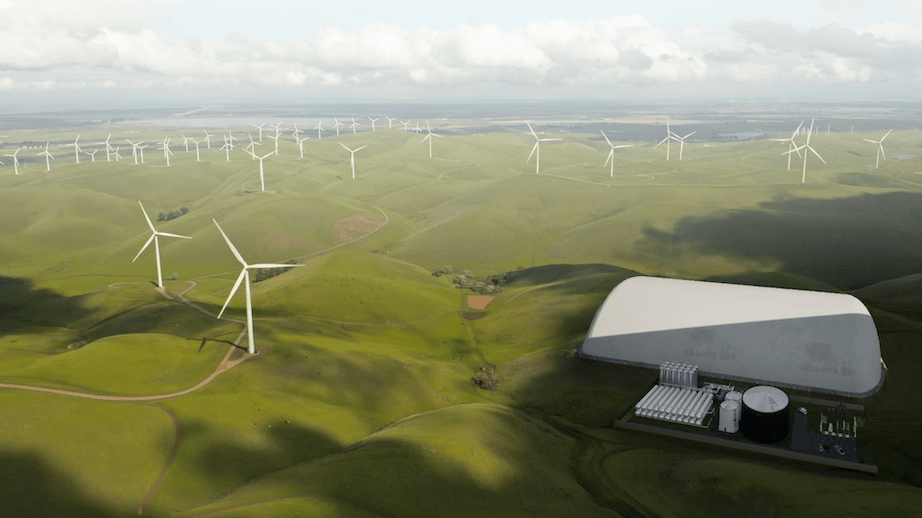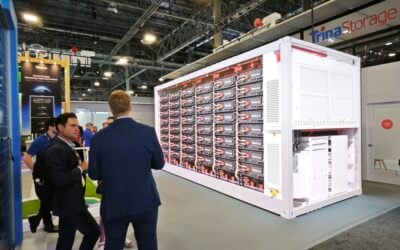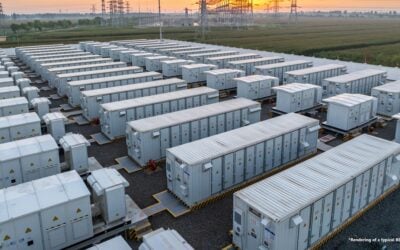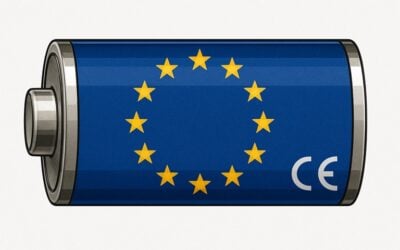
A “novel and innovative” technology which uses CO2 as a medium to store energy could be made using off-the-shelf equipment and made available to the market as early as next year, the company behind it has said.
Energy Dome, a startup headquartered in Italy, has raised US$11 million in a Series A funding round and entered a Memorandum of Understanding (MoU) regarding the first commercial deployment of its CO2 Battery with one of its investors.
Claiming the technology’s optimal application is for daily charging and discharging of energy with storage durations of between four and 24 hours, Energy Dome’s first demonstration system is being built in Sardinia, southern Italy, as Energy-Storage.news reported back in May as the project got underway.
The Series A funding will be used to complete the 2.5MW / 4MWh demonstration project, Energy Dome said yesterday, as well as to accelerate growth of the business, founded in 2019 by the CO2 Battery’s inventor, entrepreneur Claudio Spadacini. The demonstrator is going to be finished and tested during the first quarter of 2022, according to Energy Dome.
Try Premium for just $1
- Full premium access for the first month at only $1
- Converts to an annual rate after 30 days unless cancelled
- Cancel anytime during the trial period
Premium Benefits
- Expert industry analysis and interviews
- Digital access to PV Tech Power journal
- Exclusive event discounts
Or get the full Premium subscription right away
Or continue reading this article for free
Italian renewable energy and utility services company A2A participated in the fund raise via partnership with the round’s lead investor, tech VC firm 360 Capital. A2A and Energy Dome have signed the MoU for a proposed 100MWh project.
An Energy Dome spokesperson told Energy-Storage.news that the project is “likely to be a 20MW output, five-hour duration battery,” and that the start of construction is being targeted for sometime during 2022.
The project could be completed within about 16 – 18 months, but the company said that “thanks to a highly standardised and modularised approach,” lead times of future projects could be “drastically” reduced very quickly.
The Sardinia demonstration project will be built with exactly the same technology of the full-scale 100MWh to 200MWh projects Energy Dome hopes to be building next and the spokesperson claimed the demonstrator will “complete de-risking activities of the technology”.
Technology uses closed loop process
The CO2 Battery uses a closed loop cycle process, changing CO2 gas into liquid at ambient temperature and back again, also storing heat created by the compression process in a thermal storage medium.
The system is discharged as the liquid turns back into gas through the application of the stored heat. As this happens, the gas is driven through a turbine to generate electricity before being pushed back into the ‘dome’ where it is stored, to be used again.
Engineering consultancy Fichtner carried out a complete assessment of the CO2 Battery as one of the first activities in Energy Dome’s technology development cycle, the spokesperson told Energy-Storage.news.
Focusing on four areas: project feasibility, technology performance, costs and health and safety, the assessment’s result was “favourable and validated the technology”. After this, Energy Dome completed construction and testing of the thermal energy storage system, extensively studying it with the Politecnico of Milan.
This confirmed the expected performance results and allowed for the correct sizing of the system for the demonstration plant.
The company further claims the long-duration battery’s performance and components will be non-degrading over an expected 25-year lifetime in operation. What’s more, the fact that it uses off-the-shelf components means projects can be built and replicated at scale, the spokesperson said.
“There is no need for a new factory to be put up and running in order to have the commercial plant built, nor extensive testing time of new turbomachinery and new chemical reactions. For the construction of a project like this we will rely on the existing supply chain,” the company representative said.
“Once orders are placed to suppliers, the lead time for construction will be the manufacturing time of the equipment, the transportation to site and final electromechanical construction and commissioning.”
The engineer-entrepreneur CEO
Founder and CEO Claudio Spadacini’s previous company, called Exergy, had focused on advanced turbines for generating power from geothermal energy and before that ran a tech company converting agricultural waste into biogas.
From this experience and his engineering background, the CEO had an intuition that a thermodynamic process could be developed to store energy efficiently and cost-effectively.
“The idea for Energy Dome’s approach came thanks to a combination of Claudio’s previous experiences designing Organic Rankine Cycles plants, which design starts from the selection of the most appropriate working fluid, and Biogas plants, that use atmospheric gasholders to keep large volumes of gas confined,” the spokesperson said.
CO2 could be kept liquid at ambient temperature, while biogas gas holders could keep the carbon dioxide stored when in its gaseous form.
With the company stating its goal is to make renewable energy dispatchable 24/7, the Energy Dome spokesperson claimed that other thermomechanical technologies on the market today are unable to offer the same combination of round-trip efficiency (the CO2 Battery’s is >75%), a readiness for market by using off-the-shelf parts and ease of siting, with no special site conditions required.
Energy Dome is among the founder members of the recently formed Long-Duration Energy Storage Council (LDES Council). The council has launched a report modelling a pathway to reducing power sector emissions in line with keeping global warming limited to 1.5°C by 2040, with the aid of deployment of up to 140TWh long-duration (8 hour+) energy storage in that time.





